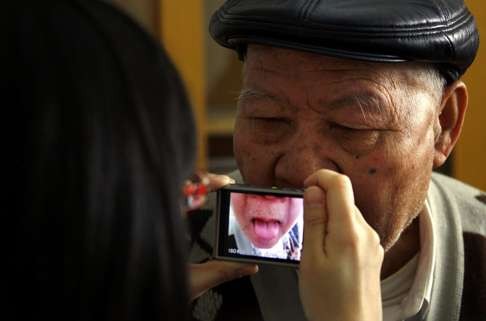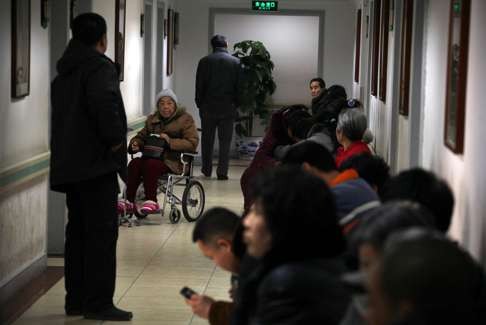
One in three of world’s adults with diabetes is in China, WHO reports
Prevalence of chronic disease among Chinese has risen more than ninefold in a generation, far faster than in rest of world, thanks to unhealthy lifestyles, population growth and ageing

Nearly one in three adult diabetes sufferers in the world is in China, where there has been an explosion in the numbers affected in the past quarter-century, a new World Health Organisation report shows.
While China accounts for 19 per cent of the world’s population, it had more than 30 per cent of adult diabetes cases in 2014. Of the 422 million adults with the chronic disease, an estimated 129.3 million were in China, the Global Report on Diabetes, published on Wednesday, said.
The prevalence of diabetes in Chinese adults has increased from less than 1 per cent in 1980 to 9.4 per cent in 2014. Globally, the prevalence of diabetes has also increased, but at a slower rate: from 4.7 per cent in 1980 to 8.5 per cent in 2014.

Part of the increase in the prevalence of the disease both in China and worldwide was down to population growth and ageing, according to Dr Hai-rim Shin, a coordinator for non-communicable diseases and health promotion at the WHO’s regional office for the Western Pacific in Manila.
But Shin said risk factors for diabetes, such as being overweight or obese and being physically inactive, had also increased.

According to the WHO’s country profiles, released alongside the global report, in China 35.4 per cent of adults are overweight, 7.3 per cent are obese, and 23.8 per cent are physically inactive. (Adults are defined as overweight if they have a body mass index of≥25 and above, and obese if they have a BMI of 30 and above. Physical inactivity is defined as not performing at least 150 minutes of moderate-intensity physical activity per week, or equivalent.)

In its report, the WHO blames growing consumption of food and beverages high in sugar for the increase in diabetes.
The standard mantra that diet and exercise will solve this problem of diabetes and other metabolic disorders is “garbage”, says Dr Robert Lustig, an American paediatric endocrinologist at the University of California, San Francisco, who was in Hong Kong this week as a speaker at Credit Suisse’s annual Asian Investment Conference.
The solution, he says, is rather to cut out sugar and processed food from one’s diet. And weight is not everything.
Asians get sicker [than Americans] at a lower BMI level because Asians have a lesser subcutaneous fat store
“In fact, Asians get sicker [than Americans] at a lower BMI level because Asians have a lesser subcutaneous fat store to begin with,” explains Lustig, author of 2013 book Fat Chance: Beating the Odds Against Sugar, Processed Food, Obesity, and Disease and widely known as the man who started the “war on sugar”.
According to the Asian Diabetes Prevention Initiative, this higher risk may be because Asians, especially South Asians, are more likely to have less muscle and more abdominal fat, which increases insulin resistance.
Imaging technology that measures fat in humans has shown that Asians of a healthy BMI have more fat around organs and in the belly area than Europeans with the same BMI. For the same BMI, Asians have 3-5 per cent more body fat compared to people of European ancestry. For the same body fat percentage, Asians have a BMI 3-4 units lower compared to Caucasians.
In its report, WHO says diabetes caused 1.5 million deaths in 2012, and another 2.2 million deaths were caused by high blood sugar levels, increasing the risks of cardiovascular and other diseases.
The report does not distinguish between Type 1 diabetes, where the body cannot make enough insulin and requires daily insulin injections for survival, and Type 2, where the body can no longer produce enough insulin to keep blood sugar at a normal level. Type 2 diabetes is more often linked to obesity and relatively sedentary lifestyles.
The WHO report called for stepped-up measures to reduce risk factors for diabetes and improve treatment and care.
Shin said China had some major gaps in access to services for early detection, treatment and management of diabetes.
“More than half of people with diabetes may be undiagnosed, and according to some estimates, only one-quarter of people with diabetes are receiving treatment. On this, there is a need to build primary and community health care services to ensure people with diabetes have access to the treatment that they need,” Shin said. “China is moving in the right direction here with its tiered health service delivery reforms, but there will be a need to ensure these work to support people with - or at risk of developing - diabetes.”